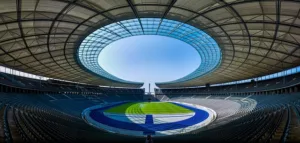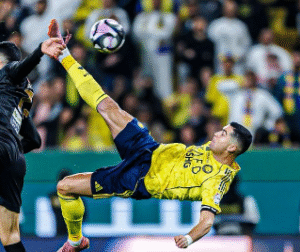Why are transfer fees so high in football : 7 Explosive Reasons Football Transfer Fees Are Skyrocketing
Why are transfer fees so high in football, Football, known as soccer in the U.S. and some other parts of the world, is undoubtedly the world’s most popular sport. Hundreds of millions of passionate fans follow high-profile teams and competitions like the English Premier League, Spain’s La Liga, and the Union of European Football Associations (UEFA) Champions League. Behind the scenes, elite professional football has evolved into a multi-billion dollar global industry over the past three decades.

Why are transfer fees so high in football : 7 Explosive Reasons Football Transfer Fees Are Skyrocketing
As television rights deals, advertising and sponsorship contracts, merchandising revenues, and other commercial sources of income have ballooned for the top leagues and most valuable franchises, player transfer fees have followed suit. Transfer spending has shattered record after record in recent years despite the broader economic downturns, with top talents being bought and sold by rich clubs for astronomical, hitherto unthinkable sums of money.
Why are transfer fees so high in football, This article will analyze the key reasons why the costs of securing playing talent in the transfer market have spiraled so dramatically:
- The Rapid Commercialization of Football
- Shortage of Elite Players
- Intensified Competition Between Top Clubs
- Greater Player Power and Control
- Extreme Dependence on On-Field Success
- The Urge to Spend Big to Keep Up
Understanding these forces shines a light on how and why transfer fees and player wages have attained levels most observers would never have predicted possible 30 years ago. The financial stakes are astronomical today, meaning the very best footballers can command remarkable prices to ply their trade on the pitches of Europe and beyond.

1. Why are transfer fees so high in football : The Rapid Commercialization of Football
Without question, the growing commercialization and commodification of football is arguably the leading cause of the surging costs for elite talent in the modern transfer market.
Whereas fine players once moved between clubs for five-figure fees up to perhaps £200,000-300,000 in the 1970s and 80s, transfer sums – along with all the related commercial forces – started taking off exponentially in the 1990s with the birth of the Premier League and Champions League competition.
Why are transfer fees so high in football, Broadcast rights were sold to ambitious television networks like Sky Sports, which marketed the newfound excitement and glamor of England’s revamped top division expertly to subscribers.
The cash infusion from domestic and international TV contracts enabled clubs to pay higher wages and transfer fees. This correspondingly made the English league more competitive and attractive to foreign stars who had not previously considered moving to England. The self-reinforcing cycle was up and running.
As legendary Spanish midfielder Pep Guardiola later said after winning multiple trophies with Barcelona: “Football has become a kind of industry now.” He was referring to the booming commercial aspects surrounding Europe’s leading teams by the late 2000s, which had sparked astronomical investments both on and off the pitch.
Why are transfer fees so high in football, Today in 2024, the snowballing forces of capitalism have ensured elite football is very much an industry in its own right rather than just a game for entertainment. Worth over $48 billion globally as of 2021, valuing the highest profile European clubs at billions rather than mere millions, modern football finance is in a different galaxy than 30 years ago.

2. Why are transfer fees so high in football : Let’s dig deeper into the money:
- Broadcasting rights for England’s Premier League were sold recently (2022-25 cycle) for over £5 billion just domestically, and £10 billion internationally. Teams like Manchester United and Liverpool have commercial partnerships and licensing deals with every kind of major company including Adidas, Chevrolet, Standard Chartered bank, Cadbury chocolate and much more. Top clubs generate well over £500 million per year from their diverse commercial interests.
- Transfer spending since 2017 has repeatedly broken the £1.9 billion record set in that first year of Neymar’s earth-shattering £200 million move from Barcelona to Paris St. Germain. Summer 2022 alone saw Premier League teams spend some £1.92 billion signing players like Antony, Aurelien Tchouameni, Darwin Nunez, and Marc Cucurella for fees ranging from £60-100 million each.
- Paris St. Germain – owned by the royal family of Qatar – is paying Kylian Mbappe an eye-watering £1 million per WEEK in wages to retain his services, having already rejected multiple world-record bids over £150 million from Real Madrid for the French superstar prodigy.
Why are transfer fees so high in football, This is the new reality of the modern football world – inflated transfer sums reflecting the billions swishing around clubs backed by states, oligarchs, conglomerates, and investors aiming to buy success and glory by signing the best talents.
3. Why are transfer fees so high in football : Shortage of Elite Players
Basic economics tells us that scarce resources in high demand will command very high prices for those controlling their supply. This logic absolutely applies in football’s player transfer market.
Why are transfer fees so high in football, Quite simply, there exists a worldwide shortage of genuinely elite, game-changing football talents relative to demand for such gifts. Experts have estimated only some 5000-8000 players across the globe realistically have the ability to compete at the very top level. Many are already locked into long contracts, narrowing the pool further for transfer purposes.
Why are transfer fees so high in football, Given Europe’s major teams can afford to pay extraordinary sums, and are fighting fiercely to succeed both on-pitch and commercially, the tiny fraction of players with the talent worth breaking transfer records for can therefore ask for exorbitant prices. Clubs desperate to upgrade their squad have little choice but to meet demands.
Why are transfer fees so high in football, A young superstar like Erling Haaland – just transferred from Borussia Dortmund to Manchester City for £55 million this summer – will likely prove great value even at that lofty fee. For all the money in football now, genuine goalscoring talents emerge only once every few years. And established legends like Cristiano Ronaldo, Lionel Messi, Neymar and Kylian Mbappe trigger chaotic bidding wars precisely because nobody else close to their calibre exists. Supply bottlenecks expansion means stratospheric fees are inevitable.

4. Why are transfer fees so high in football : Intensified Competition Between Top Clubs
Why are transfer fees so high in football, Another reason transfer spending has rocketed without signs of slowing is the intensifying fight between elite clubs to gain small edges over each other. Either through domestic league and cup glory, or pursuing the biggest prize of all in Champions League victory.
Winning major honours continues growing massively in commercial value and global status. It means increasingly angry rivals spend whatever it takes to sign football’s scarcest game-changing talents as they emerge.
Why are transfer fees so high in football, England’s ultra-competitive Premier League is the epitome of this phenomenon. Its six biggest clubs – Manchester City, Manchester United, Liverpool, Chelsea, Tottenham, Arsenal – have owners and financial backing allowing £40-60 million signings basically annually, chasing every domestic and European title frantically.
The Premier League’s competitive balance, parity in broadcast revenues, worldwide popularity and obscene financial motivations cause a feeding frenzy for the next Haaland, Nunez, or Tchouameni. Clubs know staying stagnant means getting overtaken in short order.
Why are transfer fees so high in football, We have especially seen state-backed clubs like Manchester City and Newcastle luring players by guaranteeing titles and offering meme-worthy wages. Competitors feel obligated keeping up with transfer spending given the stakes. This unhealthy cycle indicates transfer spending will stay sky-high.

5. Why are transfer fees so high in football : Greater Player Power and Control
Why are transfer fees so high in football, As top players and their agents have gained more leverage, they now overwhelmingly dictate their future transfer decisions unless tied to longer contracts. This grants them negotiating power securing extremely favourable wages and signing bonuses when they do decide to move clubs.
Superstars like Zlatan Ibrahimovic, Gareth Bale, Paul Pogba and Cristiano Ronaldo have all forced transfers, temporary moves or new mega-contracts essentially on their terms multiple times in recent years after proving their elite value at past clubs. Their talent and reputations afford them incredible control chasing ever-greater riches. Harry Kane and Robert Lewandowski are two recent examples of top strikers wanting away to bigger clubs but being denied….for now.
Why are transfer fees so high in football, Neymar triggered his own €200 release clause in 2017, prearranged with Barcelona, to jump to PSG’s project for enhanced global status and wages topping €50 million annually. His transfer fate and record fee was very much in his own hands the second he mandated a move away from Spain. This is increasingly the norm now unless you are tied to a very long and rigid contract.
Players waiting to negotiate new contracts when their current ones enter the final 1-2 years – such as Paul Pogba, Kylian Mbappe, Mo Salah, Mason Mount, Bukayo Saka and others currently – exploit massive competition for their rare elite talent between the dread rivals fighting for trophies. Salaries and fees reach extraordinary levels accordingly. Teams must pay whatever it takes or risk losing them to a direct competitor! This vicious cycle will continue driving inflation until regulations somehow restrict player autonomy.

6. Why are transfer fees so high in football : Extreme Dependence on On-Field Success
Why are transfer fees so high in football, An increased correlation between on-field playing success and financial riches in football also enables top talents and their agents to demand premium salaries and transfer sums when moving clubs.
Simply put, today’s top players pursue victory because triumph on the pitch directly leads their clubs to monetary glories like enhanced sponsorships, broadcast revenues, record merchandising profits, lucrative pre-season tours, and much more.
Why are transfer fees so high in football, Winning major games also builds an individuals’ worldwide brand through success and media coverage. Sustained excellence translates into millions for their own personal endorsements, advertisements, biographies, and accumulation of fame trademarks CR7 and the like. Top players like Bale, Lewandowski, and Salah have perfected converting football success into major side commercial ventures in recent years.
In the biggest games, having gamechangers provides the best guarantee of crucial goals and match winning moments that ultimately drive monetary rewards in today’s commercially obsessed football industry….an obvious target for WAGs as well!
Why are transfer fees so high in football, This means when a rare superstar talent emerges and proves himself, the richest elite clubs backed by states, oligarchs and global investors fall over themselves to recruit him whatever the cost. The player’s potential on-field contributions directly fuel their economic goals through trophies and enhanced reputation. So record transfer fees continue being shattered constantly.
7. Why are transfer fees so high in football : The Urge to Spend Big to Keep Up
Why are transfer fees so high in football, Finally, growing financial disparities between football’s established giants and the rest have created immense pressure on elite clubs to spend whatever it takes on marketable superstars just to keep pace with their rivals.
Nowadays, the top teams in England, Spain, Germany, France and Italy make over three times the revenue of competing clubs simply from being in the Champions League. Their global popularity, sponsors and bloated broadcast contracts grant them enormous advantages to stockpile elite players. Allowing them to dominate domestically whilst pursuing European glory.
Why are transfer fees so high in football, Clubs like Everton, Leicester, Napoli, Sevilla, Dortmund and more face impossible challenges attempting to crack the elite cartel at the top hoarding the money and trophies. Thus when opportunities emerge encouraging those second-tier clubs spend big on transfers aiming to disrupt the established hierarchy, they tend to go all in. Signing potential superstars for extraordinary fees hoping European qualification results…creating self-sustaining financial rewards mitigating the massive risks.
Examples include Everton spending over £60 million on forwards Richarlison and Alex Iwobi. Leicester City breaking their transfer record signing striker Ayoze Perez. Sevilla paying over €30 million for Anthony Martial. These clubs and others feel investing heavily whenever possible in elite talent is their only route to sustainably shattering the glass ceilings to reach Champions League riches. Without that, they fall further behind.
Why are transfer fees so high in football, Unfortunately for most, these expensive transfers fail living up to hopes. Cementing the status quo with the financial “big six” clubs continuing dominating the major trophies and money through a self-perpetuating cycle.
Nonetheless, the competing urge amongst elite clubs to enhance playing squads via expensive imports will never fade. Spending huge sums on transfers aims accelerating success – which pays for itself commercially today. So transfer spending will stay sky-high to match modern football’s extraordinary financial stakes.

Watch the video : Football
Conclusion
Why are transfer fees so high in football, In conclusion, we can see numerous complementary forces at play in parallel, making today’s transfer spending reach unprecedented levels most would never have believed possible 30 years ago:
- Exponential commercial growth seeing elite football become a multi-billion dollar globalized industry and media giant
- Short supply of truly elite game-changing football talents pursued by countless rich clubs to address on-pitch needs
- Extreme financial incentives around winning major trophies and titles as routes securing greater club riches
- Competitive pressure between rivals pushing aggressive investments signing top new players annually
- Player power granting talented superstars greater control chasing ever-higher salaries through desired transfers
- Wide financial disparities cementing a ruling elite cartel that retains the best talent by any means necessary
Why are transfer fees so high in football, These self-reinforcing mechanisms show no signs slowing. Regulators have thus far ignored football finances growing detached from reality. When mid-table signings cost over £50 million and elite superstars command double, rules may need restricting transfer spending bubbles before things gets totally beyond sane rationality.
If broadcast deals, commercial rights, advertising/sponsorship contracts keep doubling every 3-5 years as has been the trend, what seemed crazy prices for a Haaland or Antony this summer could look bargains in half a decade! With national economies stuttering, perhaps football will be forced rethinking its extraordinary excess.
For now though, selling clubs and players’ agents hold the leverage securing astronomical deals. Fans should enjoy this golden era watching the very best talents in the global game pursue victory for their favourite team…and adjust expectations on what constitutes “realistic” transfer spending!
Frequently Asked Questions:
-
Which club has paid the highest total over the years in transfer fees?
Why are transfer fees so high in football, Based on available public reports and analysis, the record for highest total spend on transfer fees belongs to English giants Manchester City. Analysts estimate the club has spent over £1.5 billion on new signings since the Abu Dhabi takeover of 2008. Their lavish investments helped City become the Premier League’s most dominant force over the past decade claiming 6 titles since 2012.
-
Which player has commanded the highest transfer fee multiple times?
Cristiano Ronaldo’s sustained world-class excellence and star power has seen him break transfer records repeatedly as he switched between the very top clubs in different leagues. Manchester United paid £80 million acquiring him from Sporting Lisbon as a teenager in 2003. He broke the record joining Real Madrid for £80 million in 2009, before Juventus spent €100 million securing his services in 2018 to dominate Serie A. In 2022, Ronaldo remains one of football’s very few talents worth nine-figure sums even approaching 40 years old!
-
How much money is involved annually in the global transfer market?
According to the FIFA Global Transfer Report, over $7 billion was spent across the world in 2022 meeting clubs’ transfer expenses including fees, agent costs and other payments. European clubs account for over 75% of global spending given the concentration of revenues allowing transfers up to £100 million for singular players. The two transfer windows seeing most activity are the summer window from May-September, and the January window.
-
What was the biggest transfer shock or surprise?
Without doubt, the world was stunned in the summer of 2021 when six-time Ballon D’or legend Lionel Messi ended his 21-year association with FC Barcelona. Despite wishing to retire at the club that raised him, Barca’s financial implosion meant they could not renew his unsustainable wages anymore. Instead, Paris St. Germain pounced paying Messi an unprecedented €40 million net per season for two years to unite with Neymar and Mbappe forming a superteam seeking Champions League glory. Messi’s tearful Barcelona departure whilst still near his peak surprised fans everywhere.
-
Do transfer spending correlated with on-field success?
Strong evidence suggests heavy transfer investment does generally translate into improved on-pitch performance, trophies and prizes. However, expensive transfers also frequently fail living up to monetary value and hype for various reasons like injuries, poor fit, managerial changes etc. Examples of big transfers succeeding include Liverpool’s spree culminating in Champions League and Premier League glory. Chelsea and Manchester City regularly outspent rivals en route to their multiple title triumphs too. But Manchester United is the prime example of exorbitant spending not guaranteeing success post-Sir Alex Ferguson, suffering scathing fan criticism for their transfer decisions and lack of progress.
Must Read : Why football is the greatest sport













1 comment